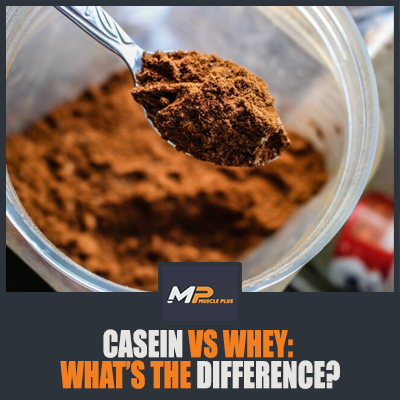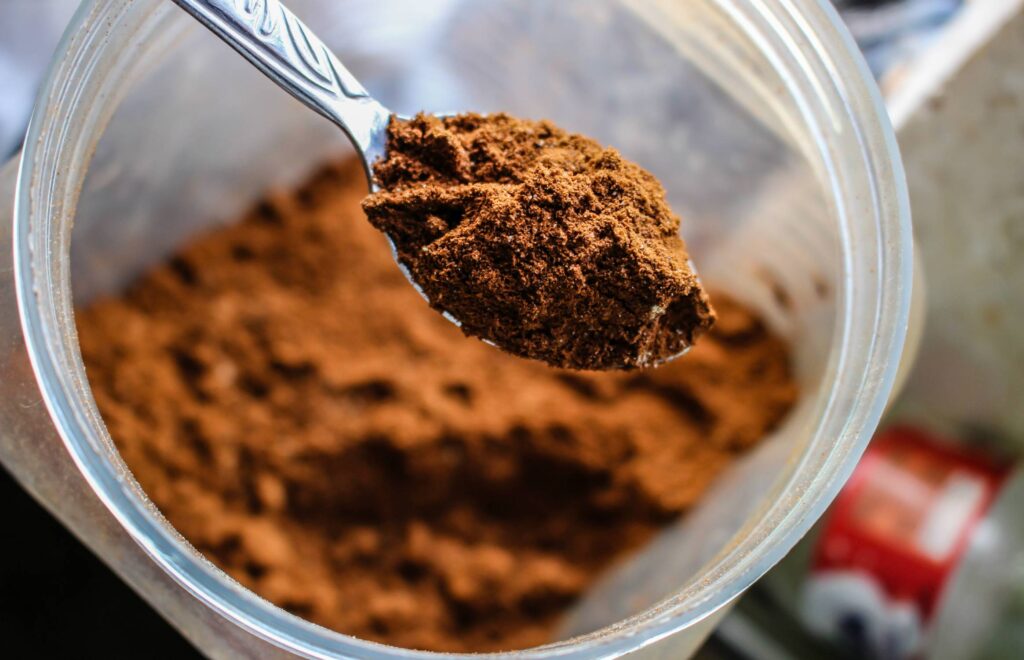Whether you are new to working out or having been going to the gym for years, protein shakes are one of the most widely used sports supplements on the market. In fact, we spend millions every year shopping for protein-related supplements so understanding the importance of casein vs whey is important.

The goal is simple, increase protein to support muscle growth and recovery. Protein is the building blocks of muscle and supplying the body with adequate amounts will ensure enough is available to support protein synthesis. When we talk about protein shakes, we are usually referring to whey protein.
This is the popular protein supplements which you will find available from plenty of retailers online. Whey is great as it’s low cost, tastes delicious and is high in protein. But many people may not be aware that there is another side of protein supplements, in the form of casein protein.
Casein shares some common features with whey and is used when looking to achieve the same goal of building muscle. But many of the features of how casein works are quite the opposite of whey protein.
To maximise the opportunity to build muscle, understanding how to take advantage of both whey and casein is important.

How is each made?
Whey Protein
The popular supplement whey protein is a dairy product and made from cows milk. When producing cheese, whey is actually a byproduct which is separated during production. Before whey became popular as a supplement, it would actually be discarded by manufacturers.
Once the whey has been separated it goes through several steps of processing. This produces whey protein in the common powder form which we find it inside supplements. Flavourings and other additional ingredients could then be added at this stage to get a great tasting supplement.
There are actually two types of whey, in the form of Whey concentrate and whey isolate. The most common is whey concentrate. This contains roughly 80% protein in each serving and is usually a low-cost supplement. Whey isolate goes through additional processing steps which allows it to achieve a roughly 90% protein content. Allowing less room for carbohydrates and fats. But whey isolate often costs more and so for many, whey concentrate is the most frequently used.
Casein
Just like with whey protein, casein protein is also a dairy protein which is produced from cows milk. In fact, milk contains roughly 80% casein protein, compared with just 20% whey protein.
Casein is also a byproduct of cheese production. During the manufacturing of cheese, enzymes are added to the milk, which causes the casein to change into a solid. This separates it from the liquid substance (which contains whey) and the solid curds of casein remain.
The casein is then washed and dried to create a powder. Additional flavours can be added as unflavoured casein tends to not taste very nice on its own.
What’s the benefits of casein vs whey?
Whey Protein
As we know, whey is a great source of high-quality protein. Whey is classed as what is known as a ‘complete protein’, this means it contains all of the essential amino acids. These are not produced in the body and we must get them from our diet. Amino acids are the building blocks of muscle. Adequate protein and amino acids allow protein synthesis to take place. This is the process of using protein for muscle growth.
What makes whey so great is that it contains fast release protein. When you participate in a high-intensity exercise such as weight training, the muscles are broken down and in need of repair to grow back bigger and stronger. This is where they use protein. As whey is fast-acting, consuming a whey protein shake right after an intense workout provides the muscles with protein at the optimum time for muscle growth and recovery.
Whey protein is extremely flexible. The taste of a whey protein shake is often delicious and a huge variety of flavours are available. MyProtein actually has over 50 flavours available to choose from. This versatility also means it can easily be combined with other ingredients such as fruit to create great tasting smoothies. Whey is also great value and low-cost. Due to its popularity, it is easy to pick-up 1kg pouches for less than £20.
Casein
Casein is also a great, high-quality source of protein. But casein is known as a “time-release” protein. This is due to supplying the body with amino acids at a slower rate and over a longer period of time.
Unlike whey, casein takes a long time to be digested once consumed. Therefore leading to the continued supply of protein & amino acids to muscles over a longer duration. This allows protein synthesis to take place even at times it would normally not such as when food has not been consumed for a long period. Casein is seen as anti-catabolic due to stopping the body from potentially breaking down protein to use as an energy source, as casein provides a sustained supply.
For the reason of slow digestion, casein makes an ideal protein supplement for long periods when you may go without a meal. For example, before going to bed is an ideal time to consume a casein protein supplement. When sleeping, repair and growth take place inside the body. Using a casein protein ensures the body has adequate protein & amino acid supply throughout an extended period to maximise any muscle-building potential.
Similar to whey, casein supplements usually contain approximately 80% protein. The price is also similar to whey concentrate.
When should I take each protein?
While both of these proteins could potentially be taken throughout the day, consuming casein vs whey at different times could maximise the benefits.
As whey is a fast-release protein, the ideal time to consume is when the body is most in need of protein. For example, after completing a high-intensity exercise such as a resistance workout at the gym. The whey protein is absorbed and able to get to the muscles quickly, ideal for muscle growth.
But whey could also be consumed at any other time during the day to boost the amount of protein in your diet. Whey protein shakes are also popular for breakfast. When first waking and have not consumed any food for hours, whey protein can quickly supply the body with protein.
On the other hand, casein is best consumed at opposite times to whey protein. For example, before going to bed or when you will be going without a meal for a while. We are big fans of consuming whey protein shakes before bed to maximise the protein available for muscle growth and recovery.
Conclusion
Overall, whey and casein are fantastic sources of protein and the benefits of casein vs whey are clear. Both of them are sources of dairy protein and produced as the byproduct of cheese making. As whey protein is quickly absorbed, this makes it an ideal supplement for after an intense workout, when muscles are like a sponge and ready to absorb the protein. Casein is better suited to before bed, due to providing a sustained release of protein over several hours[1].
Both are great for supporting muscle growth and adding additional protein into your diet. Whey and casein shakes can be used in the same training routine, just at different times in the day. Which protein shakes are you currently using? Let us know in the comments.

